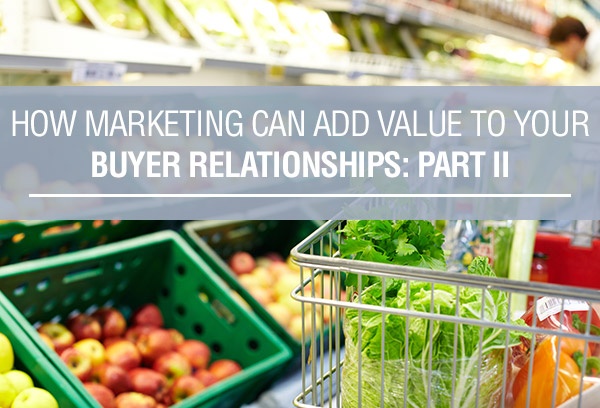 In part I on this series topic, we introduced the value in having consumer data-based conversations with your retail buyers, now we want to give you specific examples of what we mean. Reference Part I from last week if you haven’t already. If you have, then let’s dive in.
In part I on this series topic, we introduced the value in having consumer data-based conversations with your retail buyers, now we want to give you specific examples of what we mean. Reference Part I from last week if you haven’t already. If you have, then let’s dive in.
Here is a hypothetical example of how this process works starting first with thoughtfully created brand content that delivers a desirable solution or inspiration:
Let’s say you’ve been tracking page visits on your website and you can see that your dessert recipes are getting the most views. In response to this interest, you develop a free recipe eBook featuring five new dessert recipes that visitors can access by completing a short form.
The answers to these form questions then become opportunities for you to improve the person’s experience with your brand and impact sales – and in the examples below, you’re improving the brand experience specifically at the store level.
Let’s look at some hypothetical form responses and how to use that data in your conversations with a retailer:
Question #1: Would you like to see more recipe inspiration at the point of purchase to help you make a purchase decision?
Data Set #1: 74% respond ‘yes’
Action to Share with the Retailer: You update your clamshell product line with a new multi-layer label that highlights a 30 minute recipe on the front and provides the full instructions on the inside.
—
Question #2: Do you believe that fresh produce is a cost effective alternative to non-fresh snacking items?
Data Set #2: 52% respond ‘no’
Action to Share with the Retailer: You implement a 4 month social media campaign to highlight the cost effectiveness of your fruit and vegetable snack packs as compared to several snack pack items found in the grocery aisle. Your current reach is 250,000 consumers/mo. and you anticipate that your investment in advertising dollars will result in over 5,000,000 impressions over the course of the campaign. (Keep in mind that you can geo-target this campaign to align with a particular retailers’ store locations to more effectively drive sales with them.) In addition, you launch an email campaign to the ‘no’ respondents that underscores this campaign messaging.
—
Question #3: Would you be willing to try a new fruit or vegetable if you could learn about flavor and use before purchasing?
Data Set #3: 74% respond ‘yes’
Action to Share with the Retailer: You develop a series of point-of-sales materials focused on highlighting flavor, texture and usage suggestions to help consumers feel more informed and comfortable about your new (or more exotic) items.
Not only can you see how this information helps your team identify specific marketing opportunities, but you’ve now presented quantitative reasoning for why your retail partner should pay attention to your marketing efforts. You have done your homework, and you are directly addressing the needs of the consumer – and by default addressing their sales growth needs as well.
Are you intrigued by this process, but you aren’t sure where or how to start? Give us a shout and let’s talk about how we can help you implement this strategy for your marketing in 2017 and beyond.












